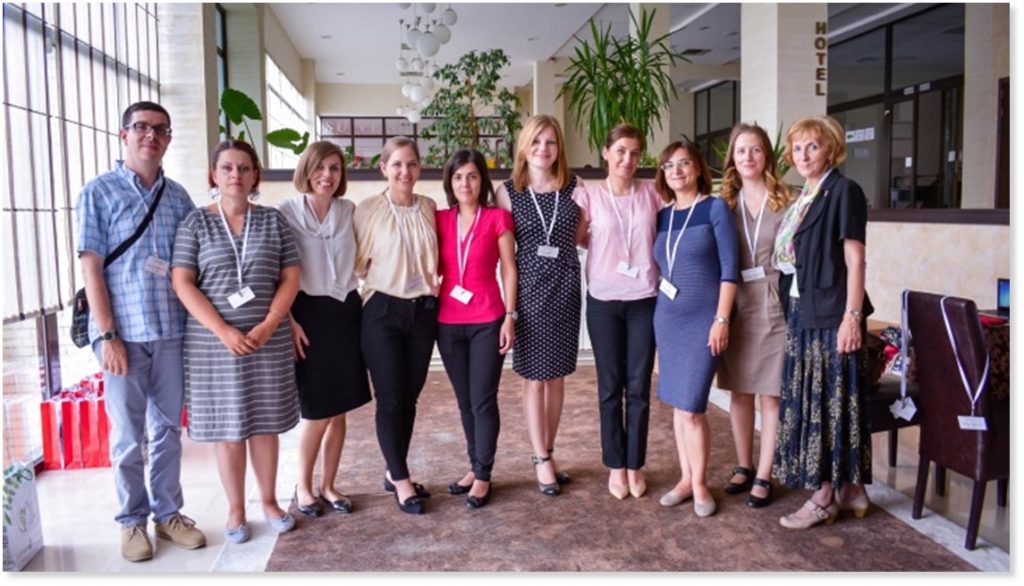Technological engineering
The Department for Chemical Engineering was developed in 1977, at the Technical Faculty in Bor, University of Belgrade. At the Chemical Engineering program students are trained in the field of natural sciences and, in general, in engineering disciplines such as mathematics, physics, chemistry, thermodynamics and basis of technological processes. Students learn about the transport phenomena and the processes in industry, about the methods and processes of raw materials conversion into inorganic products. The professional practice is carried out in the final year of their studies, when students can gain a deeper insight into the real industrial processes and the environment. Chemical Engineering program has two modules:
- Environmental Engineering
- Inorganic Chemical Technology

Students of Inorganic Chemical Technology module are more oriented towards designing the equipment in the unit operations, technology of new materials, electrochemistry, materials and corrosion protection. Environmental Engineering module is aimed at educating and training future professionals for the implementation and control of new technologies for reducing the adverse effects of industrial processes on the environment. Except the basis of technological processes, students acquire knowledge about soil, water and air pollution and protection, ecology and toxicology. As Bor has been a town of mining and metallurgy for over a century now, there are numerous technological processes which should be adapted to sustainable development in this region. Members of the Department for Chemical Engineering are experts in environmental monitoring and assessment, air, water and soil pollution, control and prevention, biomonitoring, phytoremediation, electrochemistry and material corrosion and protection, surface characterization, oxido-reduction catalysis, electronic waste management, statistical data evaluation. The main devices on the Chemical Engineering Department used for scientific research are: Inductively Coupled Plasma Optical Emission Spectrometer, Optima 8300, Perkin Elmer; Electrochemical system IVIUM XRE, IVIUM Technologies; AFM (Atomic force microscopy), MultiMode with ScanAsyst, Bruker; Spectrophotometer Beckman DU-65. Scientific research at the Chemical Engineering Department includes:
- Air quality in the industrial, urban, suburban, rural and touristic zone of Bor and the surroundings is affected by the pollution emitted from the mining-metallurgical processes in regard to the current air quality guidelines on the national, European and world level. Quantifying the relations between AD (atmospheric deposition), PM (particulate matter), SO2, Cu, Zn, Pb, Cd, As, SO42-, and meteorological parameters (air temperature, maximum wind gust and relative humidity) during long term pollution, is one of the directions of our research
- Chemical and statistical evaluation of different kinds of pollutants such as heavy metals (HMs) and polycyclic aromatic hydrocarbons (PAHs) in different parts of various plant species in terms of obtaining relevant information on plant biomonitoring and phytoremediation potentials, as well as on possible risks from the consumption of edible plant parts
- Biomonitoring provides the patterns according to which pollutants circulate in nature, i.e. the system soil-plant-air, using woody and herbaceous plant species. An interdisciplinary approach to such research offers possible solutions for controlling and reducing the negative effects of the substances of anthropogenic origin. Biomonitoring estimates the presence of harmful substances in the environment, but also the possibility of their entering the food chain through medicinal and edible plants. Testing plants as excluders or hyperaccumulators indicates the possibility that they could be used in green technologies. Phytoremediation and re-vegetation reduces the transmission of polluting substances from the tailing ponds to the air; prevents their subsequent translocation into the deeper layers of soil; removes a certain quantity of metals and metalloids from devastated land
- We have characterized different wastewater streams within mining and metallurgical facilities, investigating their influence on pollution of the local watercourses before their confluence with the Danube River. Extensive research has resulted in data on the levels of polluting substances in all three environmental resources (water, air, soil), which offers the possibility of predicting their models of behaviour in biosphere
- Following world trends, the importance of impact of environment on different materials and in return the impact of materials on the environment, is acknowledged as one of the main topics of our studies. Electrochemistry group studies various aspects of materials behaviour in different environments. The atomic force microscopy can be used for surface characterisation. Metals with application in industry, as well as metals used as biomaterials are subject of our studies. Also it is possible to study potential sensor electrodes and electrode as a means of targeted delivery of some compounds. Electrochemical station enables application of various electrochemical test methods such as polarisation methods and electrochemical impedance spectroscopy. In accordance with the place of application of specific material, the appropriate media is used for the studies. For example, metals used in the environment are tested in artificial seawater or synthetic urban acid rain; metals used in industry – in acid and basic solutions, biomaterials – in artificial body fluids such as physiological solution, blood plasma etc. Since in all of these media metal deterioration occurs to some extent and as a consequence, material corrosion and metal release into the environment takes place, it is important to find the appropriate corrosion inhibitors. Numerous organic compounds are found useful for this purpose, and lately the focus has been on „green” inhibitors
- Our work is concentrated on metalloporphyrin compounds basically on their chemical properties and catalytic function. For now, we are working on oxido-reduction catalysis with metalloporphyrin compounds, where they serve as an oxygen or electron transfer group. The work is done with both homogeneous and heterogeneous catalysis
- Lithium-ion batteries, with a 2-4 years life span, add in great extent to the electronic waste accumulation. In their structure, lithium-ion batteries contain toxic and flammable electrolyte, an organic liquid with dissolved substances like LiClO4, LiBF4 and LiPF6. Heavy metals, organic chemicals and plastics are also found in the spent LIBs with the proportion of 5–20 % cobalt, 5–10 %, nickel, 5–7 % lithium, 15 % organic chemicals and 7 % plastics. A concentration of certain metals in spent lithium-ion batteries is larger than their concentration in natural resources. For now, our research in the laboratory have been mainly directed to a sophisticated hydrometallurgical treatment of spent lithium-ion batteries. Hydrometallurgical process includes the leaching of the active material of spent lithium ion batteries, as well as the subsequent valorization of Li and Co from (leaching) solutions. Primarily, we have in our work focuses on the recycling of lithium-ion battery, with the aim to expand the area of research and other electronic waste.

Study program : Technological Engineering
Undergraduate Academic Studies (1st level of the academic studies)
Master Academic Studies (2nd level of the academic studies)
Doctoral Academic Studies (3rd level of the academic studies)
Studies and curriculums
Technological engineering (1st, 2nd and 3rd level of studies continued from 1978)
